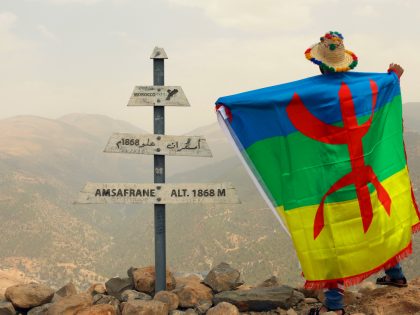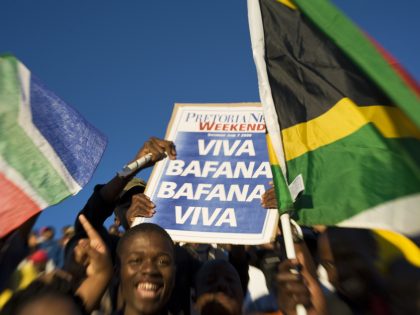The hands played by themselves
Basil Breakey's photographs serves as an important recording of South Africa jazz music in the 1960s and 1970s.

Louis Moholo playing the drums, Cape Town, South Africa. Special Collections of the University of Cape Town Libraries
A few weeks ago the Central Library in the Cape Town made a book maze from books that were intended to be pulped. Inserted in between the stacks of books that were packed on the first floor, coming up to my shoulders, and sitting atop the stack was a book, Beyond the Blues: Township Jazz in the 60s and 70s, A Photographic Book. When the maze was disassembled, the public, principals and other libraries were invited to grab a book for free. Amidst the chaos that ensued I got my hands on the book ‘Beyond the Blues.’ I have stared at it many times. It invokes in me memories I do not own. Memories I have weaved together from other books and other people. The photographs in it are not just works of art but they are ways in which a memory can be haunted and jolted from its state of forgetting.
Steve Gordon, describing the photographs, writes in the book:
Basil Breakey’s photographs are intimate, showing the half that is never told: the rehearsals, the non-events, the empty chairs, the failure, and frustration of gifted performers to find the avenue or platform to connect with their natural audience in their home country
And a postscript of the book reads:
This is a book of photographs, rather than text, and lays no claim to be a reference work. The intention is that the captions, biographical notes, and discography help to contextualize, rather than circumvent the images.
The statement is however disingenuous of the book, at least of what the book is now, many years later after being published. Perhaps the publishers intended it to be all those things but the book has chosen a path of its own, as often films, books, artwork do. Though it is true that ‘Beyond the Blues’ is a book of photographs and not text but that it ‘lays no claim to be a reference work’ is incorrect. It is a reference book.
The book was published in 1997 by David Philip Publishers and marketed as a photographic historical record of South African jazz. Basil Breakey, a friend to many of the jazz artists in the book, was the photographer. When it got late and the musicians could not travel back to the township due to Apartheid segregation laws they slept on the floor of his flat in Hillbrow, Johannesburg. They had to hide, as they were not allowed to be in a white area in the evening. Basil Breakey’s house also became a residence for many musicians. Johnny Dyani stayed there. Chris McGregor, who later formed the Blue Notes, slept on the floor.
The book also has an important introduction, written by Professor Christopher Ballantine, a professor of music at the University of Natal. In the introduction he paints the milieu in which these jazz artists had to work under. In the introduction, he avoids using only his own words, like all good writers, he is aware that these things have been said before and so he quotes Lewis Nkosi to make his point:
It is a music which has its roots in a life of insecurity, in which a single moment of self-realisation, of love, light and movement, is extraordinary more important than a whole lifetime. From a situation in which violence is endemic, where a man escapes a police bullet only to be cut down by a knife-happy African thug, has come an ebullient sound more intuitive than any outside the United State of what jazz is supposed to celebrate–the moment of love, lust, bravery, increase, fruition, and all those vivid dancing good times of the body when the now is maybe all there is.
Lewis Nkosi wrote this in exile in 1966, in an article titled ‘Jazz in Exile’ that appeared in Transition.
The book is in three parts. Part One is in Johannesburg, mostly at Dorkay House, Part Two is in Swaziland and Part Three is in Cape Town. The photographs manage to capture moments in South African Jazz history that today one can only attempt to relate to but can never completely do. The photographs reel you into that time but they also keep one at a distance. In them, one can hear the songs coming together, the spirit of the musicians, and in the ones where the musicians are sitting and not playing, their thoughts are sketched in the photographs.
There are many pictures that stand out in this book. Bassist, vocalist, composer Johnny Dyani at Dorkay House, in 1963, sitting in a chair, staring beyond the camera and behind him a collage of photos, entire lives caught in a moment, are on a large glass frame. He was 18 then. He was to leave South Africa in 1964 at 19, to tour France with the Blue Notes and to float around the world for many years thereafter, unable to return home.
Abigail Kubeka, singing aloud into the air, drowning in a black sky.
Winston Mankunku Ngozi sweating whilst blowing melody into his tenor saxophone. Louis Moholo in a trance whilst playing in Langa Stadium and a crowd of people behind him, held motionless, by his drumming. Christopher ‘Columbus’ Ngcukana on stage and a crowd of people watching him. Basil ‘Manenberg’ Coetzee on stage with Addullah Ibrahim aka Dollar Brand, staring into empty chairs, imagining the crowd, in a venue they were going to play at. Another photograph is of Abdullah Ibrahim, accompanied by Ray Nolie on stage, he has his hands flung over a piano as if surrendering them to it to do with them as the piano pleased, because he never played, the hands played by themselves. Another photograph is of a young Philip Tabane playing. Having recently seen him at the Cape Town International Jazz Festival, the photograph makes me feel emotions words cannot describe.
This book is only fraction of South Africa’s jazz history but it is an important book. If one listens carefully, uninterrupted by anything else, not even by their own thoughts, the photographs speak of times when South African Jazz thrived against tough odds.



















